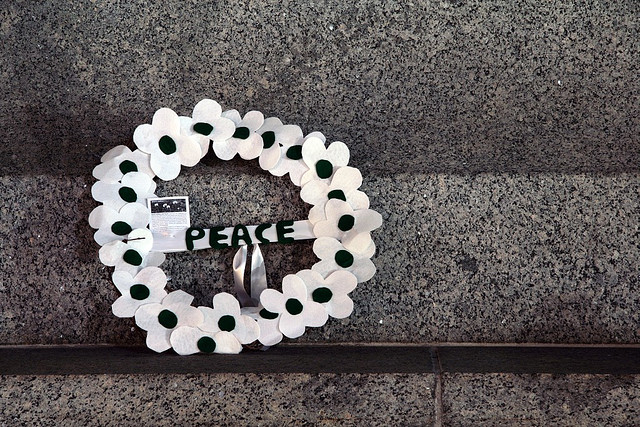
 The Frontline of Peace
The Frontline of Peace


A key figure in the Stop The War Movement, artist Peter Kennard has stormed into the Imperial War Museum in London with his pacifist views. His latest exhibition looks at war and the protest movement in the modern world. Using a range of artistic techniques, Kennard highlights the injustice and pointless nature of warfare. From gas marks to atomic bombs, fire-bombs to mass genocide, the exhibition is a thought-provoking story of conflict and our own role in it.
Kennard has been doing this shit for decades. In the 1970s and 1980s he created the visual side of the Campaign for Nuclear Disarmament, and this is essentially a review of his life work. Engaging, gruesome, and deep to its core – Kennard’s exhibition is well worth a look. And it’s free – no excuses people.

With Remembrance Day (11th November) fast approaching, the issue of glorifying war has come around again. Why do we wear red poppies at this time of year? Yes – because they grew in France and Belgium, where so many people died in the First and Second World Wars. However, they also express everything wrong with how we remember war; bloodshed becomes noble, killing becomes acceptable, the red becomes a type of strange celebration. Here the White Poppy Movement comes in.
